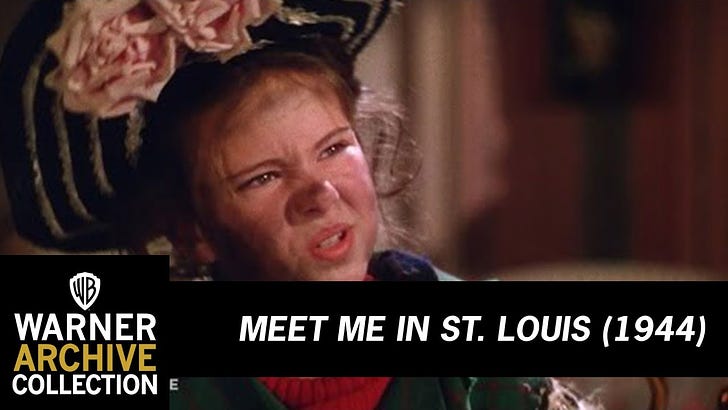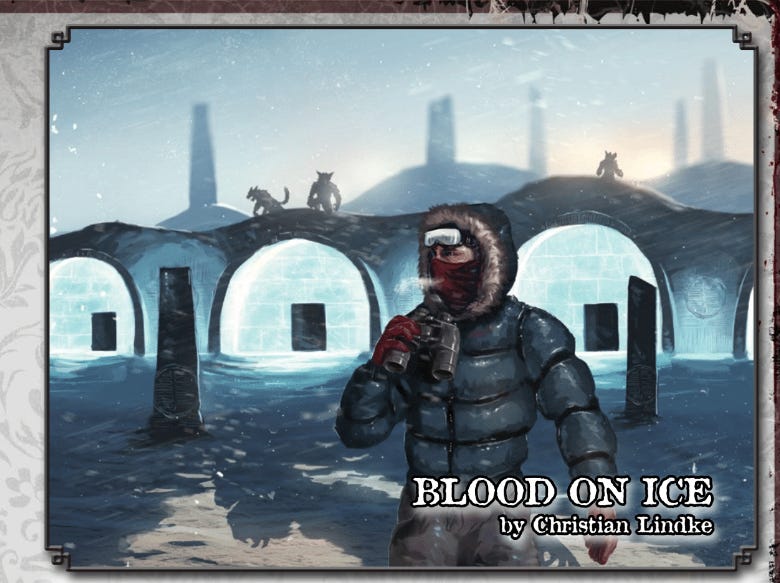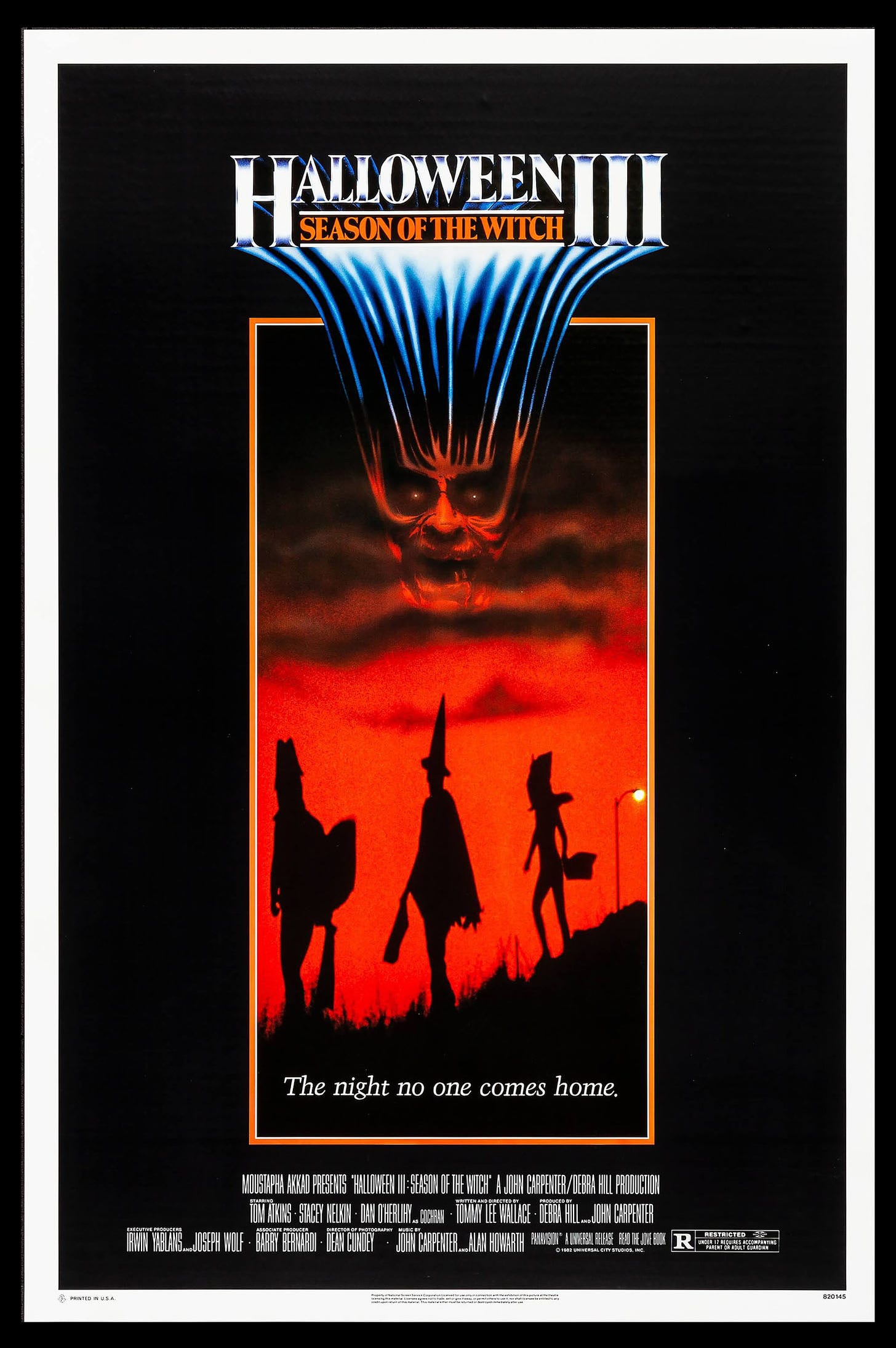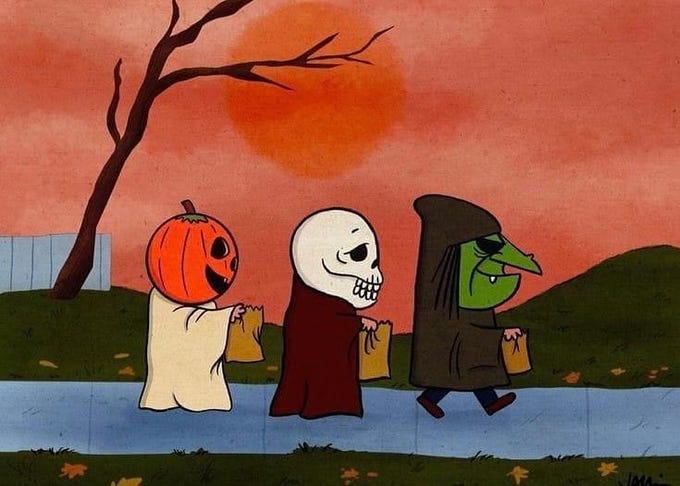Halloween from Samhain to Hooligans
In the September 27th Weekly Geekly Oddity, I shared a video from Max Miller’s excellent Tasting History YouTube channel where he shared the history of Trick of Treating and a recipe for “Vinegar Candy.” When I first watched the video, I was shocked at the description of Halloween festivities and how there was a lot of “tricking” going on and not a lot of “treating.” Add to that the fact that the “tricking” seemed a lot more like vandalism and rioting and it provided the perfect counter point to the “kids were better back then” narrative we are often sold by the media.
I’ve been thinking about the video for weeks now and that prompted me to look for a brief video to share as this week’s Oddity that discussed the origins of Halloween. I found a decent one produced by National Geographic that contained the commonly understood origins of the day, which are that it is a combination of the pagan Samhain (pronounced Saw-wane because British transliterators hate the world) celebrations and Christian practices honoring the Saints and departed loved ones.
I won’t go into the complex reasons Pope Gregory I recommended transforming pagan rituals with Christian meaning in order to convert pagans to the Christian faith, except to mention that according to St. Bede he did make that recommendation.
That’s all tangential to my real interest, which was wondering if National Geographic would mention the destructive hellions of the early 20th Century and mention them they did and they extended the timeline to include the 1930s. It’s kind of funny to think about the “Greatest Generation” as a bunch of youthful hooligans who would tear the gate from your house for a massive bonfire or that their future wives would stuff dresses to frighten street car drivers.
What I find particularly interesting though is that compared to Max Miller’s history, the National Geographic piece comes across as very thin. It really speaks to how wonderful the democratization of media is and how it has enabled deeper dives into niche subjects in entertaining ways. Miller provides numerous citations and original source documents, while the National Geographic video relies on a short interview with a professor to make its point. An interview that views more like a Giorgio Tsoukalos commentary than a discussion with a person steeped in the lore, so to speak.
What?!
You didn’t think I could make it through the Halloween season without mentioning Giorgio Tsoukalos did you?
Weekly Film Article Cavalcade
The Lamentations of Luke Y. Thompson
I’ve got two reviews from Luke Y. Thompson this week, the first is a new movie that Luke has been writing a lot about lately and the other is an older review of a Disney+ one-shot that is a high-concept adaptation of one of my favorite comic books.
Terrifier 3
After reading Luke’s trilogy of articles covering the Terrifier films I was beginning to lament that I’d never get to read his thoughts on the film, but thankfully the folks at CineGods had sense enough to pay him for his thoughts on Terrifier 3. Given how much Luke has enjoyed the franchise in general, and how much he’s advocated for it in several articles, I almost expected a default 4/4 stars from Luke. Almost, but I know Luke well enough to know that he never turns off his critic mode. Luke has broad tastes in film, but he has a particular affection for horror and he’s watched enough that his critical lens never fully fades into the background.
Luke’s review is likely one of the few places where you’ll see a somewhat lengthy discussion of the religious imagery in the Terrifier series. Given that Luke was on the PureFlix beat for a while, and given the conversation he and I had about the religious imagery in Frailty last year, I don’t find it surprising. Luke comes at the issue from the atheist’s perspective while I come at such questions from the faithful’s perspective but it makes for interesting conversation none the less. All that said, I don’t know that I’ll be watching the film. I’ve skipped the others and murderous clowns are not really my vibe.
Speaking of murderous clowns, I was surprised Luke didn’t compare the use of imagery in Terrifier 3 to the Spawn comics. Not only do those feature a murderous Hell serving clown, but they also have a Valkyrie Angel.
Werewolf by Night
Speaking of comic books, the second LYT review I’m featuring this week is the article he wrote last year for SuperHeroHype discussing the Disney+ one-shot Werewolf by Night. Luke didn’t like the show as much as I did and found its mashup of Universal Horror and comic books to be unsatisfactory. It was neither comic book nor classic horror enough for him. He wanted them to fully embrace the direction they had taken.
I disagree with his review because I think that the show does exactly what it intended to do. Sadly, Marvel didn’t follow up on what they built here and in WandaVision. Rather than having the next wave of the MCU be one that explored the mystic side of the Marvel Universe, they decided to focus on legacy heroes and it has led to some clumsy filmmaking. That decision became clear in the final few episodes of WandaVision when instead of revealing the nefarious influence of Mephisto, and setting Wanda against him, they opted to say it was “Agatha All Along.” Given that Agatha Harkness has long been a favorite character of mine, as has the Scarlet Witch, I thought that choice did a disservice to both. A disservice that was exacerbated by the poor execution of the follow up Doctor Strange film.
Werewolf by Night begins with the perfect set up to connect the supernatural heroes with the superheroes. You see Ulysses Bloodstone, the dead patriarch at the beginning of the show, is a strange Marvel character who is a kind of bridge between many of the non-superhero and superhero storylines in the Marvel Universe. He was born in Hyboria, yes Conan’s Hyboria, and is an immortal who fought monsters in The Savage Land and on Monster Island. He’s even come into contact with Captain America. He’s a cornerstone character who wanders between genres in a way that binds 4-Color to the Horror, just as the Werewolf by Night show transitions from Black and White to saturated 4-Color by the end.
Werewolf by Night combines the Most Dangerous Game, The Beast Must Die, and so many other horror movie references into a fund and simple narrative that introduces a second important mystic item into the MCU. The first was The Darkhold, introduced in WandaVision, and the Bloodstone is the second. Yes, I wrote Bloodstone. Luke calls it The Blood Gem in his review and it’s called the Blood Gem in the comics, but in the show it’s called The Bloodstone. Don’t believe me? Just watch the excerpt from the opening below discussing Ulysses Bloodstone and how he uses The Bloodstone. It’s almost as bad, and as traditionally Marvel, as the fact that The Vanisher (aka Telford Porter) has the power of teleportation in the comics.
As much as I liked the show, this lack of attention to detail was yet another hint that the current MCU screenwriting crew just aren’t really paying attention to the source material. Which is too bad because the animation and effects crew are doing a bang up job. Man-Thing and Jack Russell (yes that’s Werewolf’s name) look exactly like they do in the comics.
If the authors and development team at Marvel Studios had paid more attention to the source material, then maybe we could have watched Wanda, Agatha, and Doctor Strange standing side by side with Damian Hellstrom, Werewolf by Night, and the Midnight Suns to do battle against Mephisto and Nightmare. It would have looked amazing and it would have been the Dark Universe we all deserved.
Courtney Howard’s View from the Center Seat
Lonely Planet
I’m a fan of romantic comedies of all sorts and if you add a layer of “author goes to random country to revitalize themselves, I’m all in. One of my absolute favorite films is Under the Tuscan Sun. Everyone hits a point in their life where they need to engage in some form of self-discovery. While we can’t all afford to buy villas in Tuscany or travel to an exclusive writer’s retreat in Marrakesh, we can use the fantasy of being able to do that in our own self-reflections.
It’s easy to criticize these kinds of tales as elitist, but such criticisms miss the point. One of the reason it’s missing the point is that from Sullivan’s Travels and It Happened One Night to Under the Tuscan Sun the authors and directors are aware of the problem and they tend to hang a lantern on it. The intended escape often leads to a self-awareness of privilege. It’s what separates the best of this genre from the worst.
Given the overall positive, though critical in certain specifics, tone of Courtney Howard’s recent review of Lonely Planet at Variety, the film has been added to my must watch pile of films to be watched as soon as the Spooky Season is past. What I love about Courtney’s reviews in general is that they dive past the mere recounting of plot or praise of performance. Yes, those are present as they must be in any basic informative review, but she includes commentary on shot selection and poor uses of day for night photography etc. and her discussion of the “algorithm creeping in to make the whole more bland than the ingredients” is a bit to presentist for my tastes. As someone who read many a “note” from development over the years that was shared with me by screenwriter friends, the algorithm is no more a fan of the bland than the average executive. It’s just another excuse for executives to assert you should adopt their notes.
Glimpses from the Substackosphere and Bloggerverse
Over at
the team at discuss the particular challenges that designers of naval games face when trying to simulate their subject matter. It’s a very good article that reminded me of how Broadsides & Boarding Parties was the first game I house ruled, though it was not the naval aspects I found wanting, and how Harpoon served as research material for Hunt for Read October. This isn’t a critique of the article, which is very insightful, just to say that when a game addresses the particular challenges well it can lead to something magical.’s most recent D&D homage is a “toon” reimagining of the 2006 D&D Player’s Kit. The cover of the game features one of my favorite monsters, one inspired by A.E. Van Vogt’s Voyage of the Space Beagle and one that has only now started to become a bit overused. It’s still an awesome monster though.I often talk about how Michael Moorcock’s Elric stories were my first real introduction to fantasy fiction and how that has made me an inversion of your typical SF and Fantasy Fan. Where others seek deconstruction of “staid tropes,” I am tired of the inversions and seek the construction of heroic narratives. Elric’s flawed anti-Conan is my “hero of reference,” so when I encounter Lancelot he feels fresh. It also means I notice the subtle flaws of such characters more than some other readers do.
I don’t often talk about WHY I picked up the first Elric novel I read, Stormbringer, but it was because of the art of Michael Whelan. He has subsequently become my favorite artist and this piece by Gerald W. Page on
’s Substack discusses many of the reasons why I love his art so much. It was Whelan’s art, and not the Call of Cthulhu role playing game, that got me to read H.P. Lovecraft as well. His paintings are evocative and memorable and I thank him for introducing me not only to Elric, but to John Carter of Mars as well. has a nice piece on Jerrold Cable TV Boxes and boy do I have fond memories of the one we had at home. I could feel and hear the click as I read the piece.Role Playing Game Recommendation
Believe it or not, this section is the reason I’m running late this week. I wanted to recommend a horror game that wasn’t Call of Cthulhu or Chill (which has been revitalized as Cryptworld) and I’d already recommended Shiver. They are all great games and I’ve recommended all of them before.
I also wanted to avoid being too self-serving by recommending a game I worked on, or at least an adventure I wrote, but the thing is I am very proud of the adventure I wrote and really wanted to recommend it. So I spent days debating myself whether I should make the recommendation at all.
In the end, I decided that I would put all humility aside and give my whole hearted recommendation that you check out “Blood on Ice,” the adventure I wrote for the Savage Worlds Roleplaying Game and that was published in Savage Tales of Horror vol. 2. The adventure is a high concept mashup of Beowulf, The Most Dangerous Game, GI Joe, Dog Solders, and Die Another Day.
I think that might be overselling it a bit, but those were my primary sources of inspiration and I think it is a fun time. It is very much set up for a one-shot Halloween adventure and is narrative and not “sandbox.” There is potential to spin it into a campaign that would be sandbox, but my design effort here was aimed at playing a story. The GM can take that story many directions, if he or she reads the whole adventure first and makes inspirational adjustments accordingly, and I have done so many times. There is no right way to run the adventure, but there is one wrong way and that’s to treat it like a plot outline and not a jumpstart.
Music Recommendation
This week’s musical recommendations are a bit odd. As I mentioned in my first October Weekly Geekly, I wanted to recommend horror/Halloween themed songs every week and I did so last week. However, when I was listening to one of the new Cure song drops on YouTube I noticed something odd in my list of recommended videos on the right hand side of my screen. Instead of getting a bunch of recommendations for classic post-punk bands of the 80s and 90s, I was getting recommendations for post-punk bands filled with 18-24 year-olds who had uploaded their music LAST WEEK.
Let’s just say that this led to a couple of hours of me exploring new artists and the result of that dive is this week’s list of songs.
I’ll start with New Zealand’s Shallow Dive. They are a young band that’s been getting enough traction to warrant an article in their local news media, even though their current catalog of songs is a bit…shallow.
They are a fun post-punk band that combines the sounds of Interpol, The Cure, Catherine Wheel, and others into an interesting sound. I’m posting three videos featuring their music. The first two feature uploads of their studio recorded songs, while the third features them playing these two songs live in a local competition. They sound good recorded and live. They are a little derivative, but if their subsequent songs are of similar quality I’ll be adding them to my regular playlist.
Let’s take an audio flight from New Zealand’s Shoegaze and Post-Punk sound to the Argentinian Brit-Pop and Alternative inspired sounds of Pacifica. The band’s name could not be more explicit as to who the major influence is, hint it’s Elastica, but I found this Argentinian duo eminently listenable. Inés and Martina have been making music a little longer than the young folks in Shallow Dive, but they are another example of how as much as I feared Rock is not dead. Their song Premature Rejection has a wonderful Elastica inspired melody with a very witty title.
The first song I thought of when listening to Premature Rejection was Elastica’s classic Connection. The inspiration is apparent, but I’m very forgiving of this kind of thing in general. After all Killing Joke, The Damned, and Nirvana each have a song that uses the same melody and AC/DC made a career of playing essentially the same 3 chords. I’m just happy “these kids” are making Rock.
To share yet more new Post-Punk Rock, this time influenced by Snow Patrol and the “OC Sound” is EGOISM’s Getting Older. By “OC Sound,” I don’t mean that the band sounds like they came from Orange County. They sound nothing like The Offspring, The Vandals, Social Distortion, or Agent Orange. Instead, they sound like the music McG and the team chose as the soundtrack for the show “The OC.” This song was released six weeks ago, but if I saw Ryan looking out at the Pacific Ocean mourning Marissa’s death and heard this song, it would fit right in and that’s a good thing.
I was trying to think of a reason why all these younger bands would be channeling the Post-Punk and Alternative sounds of the late 90s and early 00s. It could be because the music of that era was fantastic, and it was, but I think it might also be Edgar Wright’s fault. His films tend to have amazing soundtracks and the pinnacle of his ability to interweave an excellent soundtrack with a film’s narrative is Scott Pilgrim vs. The World. That movie is 14 years old and would have come out right as a lot of these young people would be primed and ready to be introduced to new sounds.
Yep, Edgar Wright might have saved Rock and Roll.
Classic Film Recommendation
The movie selection for this week was a no brainer. When John Carpenter and Debra Hill conceived of a series of films to be released at Halloween, they imagined a cinematic anthology series where each year saw a new terrifying tale. It was a great idea, but one that sadly got side tracked when John Carpenter was persuaded/pressured into writing a second Michael Myers film after the success of the first Halloween.
The fact that Michael Myers got two early entries in the franchise almost guaranteed that the anthology idea was dead and that the Halloween series would now be the Michael Myers series. It’s too bad because it also meant that when Tommy Lee Wallace’s Halloween III: Season of the Witch was released people were asking “Where the Hell is Michael Myers?!” instead of “How amazing is this imaginative tale?!” Wallace details the film making process and how the movie eventually became a cult classic in Halloween 3: Where the Hell is Michael Myers? and I’m glad the film has received the fans it deserves over the past few decades.
Halloween 3 is an homage to Hammer and Amicus Horror films and features a plot that reminds me a bit of Nothing but the Night in its willingness to have the majority of the victims be children. To tie it into the opening Weekly Oddity, the film features what could be considered a solution to the particular problem of youth engaged in Halloween inspired vandalism.
Halloween 3 combines the supernatural and technology to create a genuine sense of dread. These things are often, such as in the case of The Exorcist, in opposition to one another. The most terrifying moments of The Exorcist are when doctors and psychiatrists try to solve the problem and “treat” Regan. The most terrifying moments of Halloween 3 come when a television commercial begins to play.
There’s a lot to unpack in this picture and I’d love to hear your thoughts on it.












In the interests of accuracy, I must note that Cinegods does not pay. It's a site maintained by critic friends for reviews we are either obligated to do in some way, or really want to do.
I don't find Terrifier very similar to Spawn. Hellraiser: Judgment, on the other hand, is precisely the low-budget cop-and-horror Spawn movie Todd McFarlane keeps describing as the one he wants to make, complete with John Gulager as a Clown-like character.